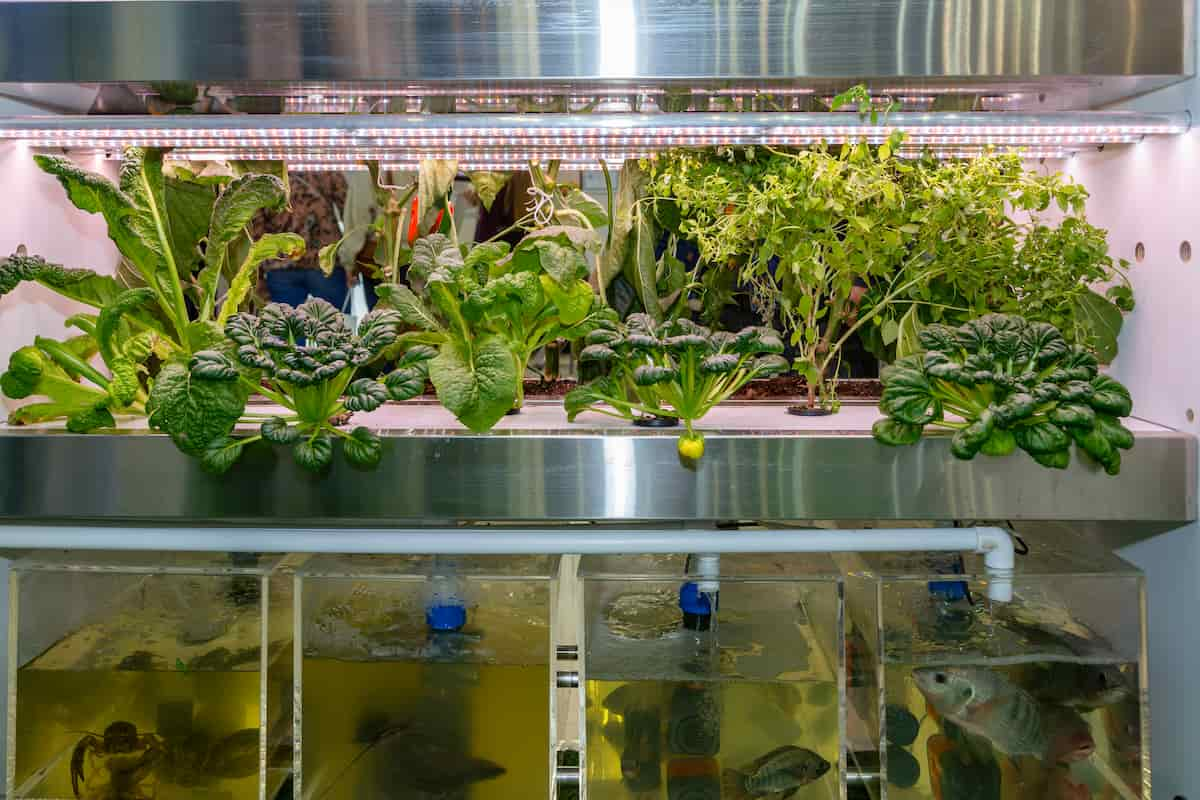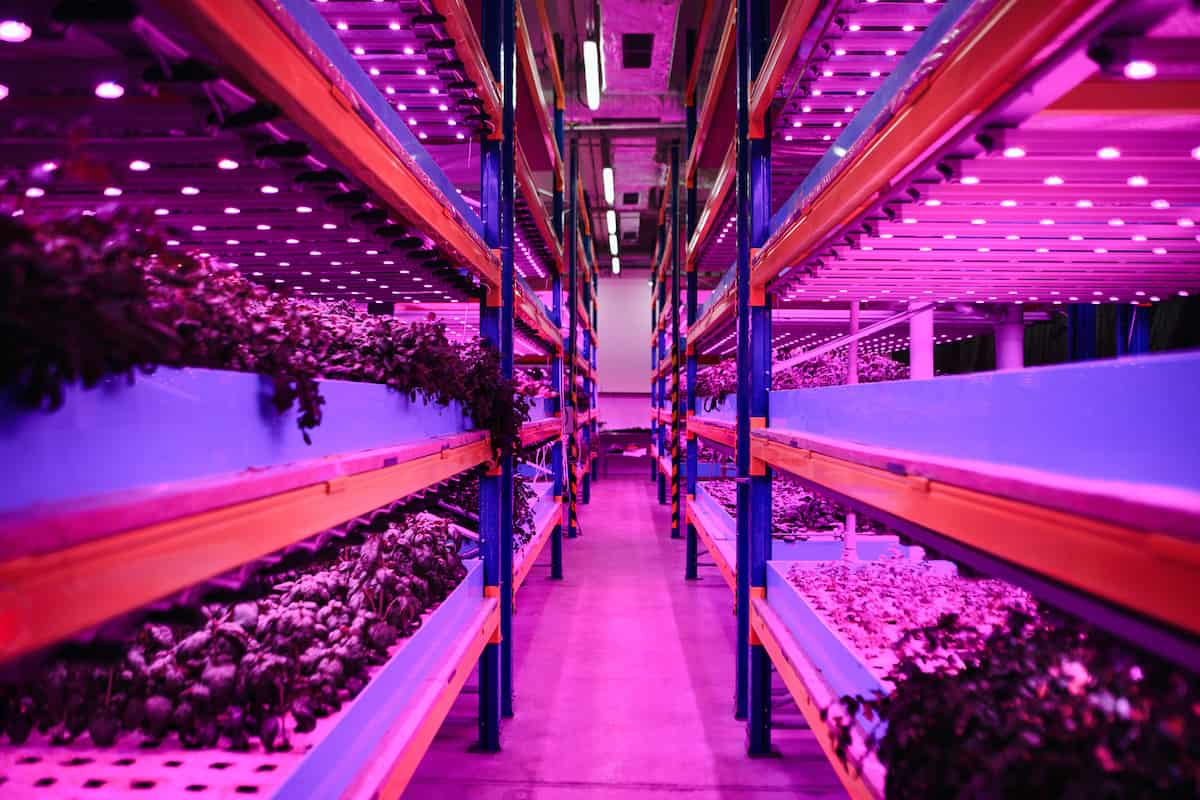A greenhouse provides shelter for your crops. Plastic or glass walls and roofs make up the structure for growing plants that require regulated climatic conditions. A greenhouse can be as small as a shed or as large as an industrial building. Plants that would not normally survive your climate can be grown in a greenhouse, increasing their growth and fruit production.

Aquaponics has the advantage of being able to grow crops indoors, in a basement, garage, spare room, kitchen, and greenhouse. In many cases, an outdoor aquaponics setup poses too many challenges to be practical. A greenhouse can solve this problem. Aquaponic greenhouses are popular among small-scale aquaponics growers since they allow them to grow crops and raise fish all year round.
How to Start Aquaponics in Greenhouse
Factors to Consider in Using Aquaponics Greenhouse
You should consider the following factors when setting up a greenhouse for aquaponics:
Floor: Aquaponic greenhouses require a sturdy deck to support heavy equipment and water. When it comes to aquaponics, the floor should not accumulate water because regular greenhouses use dirt or fabric for their flooring.
Sunlight: Choose a spot that receives full sunlight when selecting an area for your greenhouse. It is usually located on the south side of a building. The grow beds should be in the sun, while the fish tanks should be in shadier areas. Ensure the grow beds are exposed to sunlight throughout the year for optimal growth. It is not recommended to place your fish tanks in direct sunlight as they can quickly get hot and lower the dissolved oxygen in the water, which can be fatal to the fish. Algae growth in fish tanks can also be facilitated by direct light.
Ventilation: Ensure that the greenhouse has proper ventilation. In the greenhouse, adequate ventilation is crucial to maintain airflow and humidity during the colder months and regulate summer temperatures.
Insulate: Ensure that the greenhouse is adequately insulated. Temperature fluctuations can be prevented by insulating your greenhouse.
Design: The greenhouse design should be compatible with your aquaponics system. Growers, including media beds, NFTs, rafts, and hybrid systems, use various aquaponic systems. Ensure your greenhouse can accommodate the system you intend to implement and the expansion you plan to do. A greenhouse should meet your system’s needs and increase your system’s productivity and performance.
Space: Consider your working and walking spaces when designing your greenhouse’s layout. Ensure you have enough space to roam, monitor, and harvest your crops.
Electrical: Aquaponic greenhouse switches and wirings need to be properly designed. If you’re unsure if your electrical design meets local safety standards, consider hiring a professional electrician. The following factors should determine your aquaponics greenhouse’s electrical needs:
- The degree to which the greenhouse environment needs to be controlled.
- Three factors determine the greenhouse’s heating, cooling, and ventilation needs. A greenhouse’s design, location, and climate are all factors to consider. Secondly, if you are supplementing winter lighting with grow lights. Finally, the size and flow rate of your aquaponics system.
Building An Aquaponics Greenhouse
Arrange the Fish Tanks and Grow Beds Based on Their Temperature Requirements
For grow beds to grow throughout the year, they need more sunlight exposure. Therefore, you should place your grow beds near insulated walls to provide heat and energy. A shaded area should be used to keep fish tanks from reducing oxygen levels and from forming algae.
Choose Insulated Walls for Your Greenhouse
Greenhouses with insulated walls are more energy efficient. The walls protect plants and fish from freezing during cold nights, which absorb heat from the outside environment during the day and release it during the night. Furthermore, it conserves the heat released by electric heaters.
Ensure that the Greenhouse Meets the Requirements of the Aquaponics System
Maintaining the environment and maximizing performance and productivity are your ultimate goals. Create a floor plan and adjust the temperature to ensure a comfortable working environment. Place posts and structural walls where you can hang your plants. Before installing the structural walls, ensure a drip system is in place.
In case you missed it: Shrimp Farming in Your Backyard: A DIY Guide To Home Aquaculture

Decide on the Flooring to Be Used
Knowing the types of flooring will help you choose materials that offer quality and convenience. Aquaponic greenhouse flooring options include:
- Dirt: For beginners who want to start with cheap material, dirt is a good choice. Because the drainage is drowned and pests are invited, this is not a permanent flooring option. To prevent being muddy, compact the dirt before installing it.
- Gravel: Although gravel offers excellent and adequate drainage, the surface is rough and hard, making it difficult for objects to be accessed.
- Stones: The most accessible material is this one. Compared to other materials, it is easy to install and looks good. The stones are easy to walk on, and they promote drainage.
- Concrete: Your flooring should be easy to clean and smooth to move objects and wheelbarrows easily. The price is worth it because of its durability.
Finalize the Placement of Your Tanks
Ensure that swamp tanks are slightly buried under your beds. Ensure that the opening pad and the floor are levels. Meanwhile, a fish tank should be near outlets since it needs more electricity-powered equipment.
Plan Your Electrical System
Among the equipment that requires electricity are pumps, heaters, and ventilators. The greenhouse’s power consumption varies depending on the climate and size of the aquaponic system. Obtain an estimate of the total power needed by contacting an electrician.
Benefits of Using Aquaponics Greenhouse
Protection from Predators
The greenhouse prevents hungry predators like raccoons and other animals from exploiting your growing crops by enclosing your fish tanks and plants. By enclosing your aquaponics system, you will also prevent theft by concealing your most valuable components.
Temperature Control
Aquaponics growers often enclose their systems to control air and water temperatures for healthier fish and plants. Additional heating may not be necessary for warm climates, but a greenhouse provides a heat-regulating effect in cold climates. Greenhouses are easier to control even if you use air conditioning and a water cooler to deal with high temperatures.
Prevents Water Loss and Contamination
The greenhouse interrupts the water evaporation cycle, preventing excessive water evaporation. As part of their design, greenhouses also help keep the water in their systems clean and free of contaminants.
Use of Natural Light
Using greenhouses, aquaponics growers can take advantage of natural light instead of paying high electric bills. A shade cloth can cover a fish tank to prevent algae growth and water heating in any greenhouse structure.
Year-round Growing of Food
By controlling the temperature of greenhouse enclosures, growers can grow crops throughout the year. Food can be grown and harvested all year round with its cooling and heating features.
In case you missed it: Prawn/Shrimp Farming Success Story: A Real Aqua Farmer Experience

Conclusion
You can start a greenhouse business as an ideal way to get your business off the ground. Transformation of a simple greenhouse into an aquaponics greenhouse requires much effort and dedication. Constructing a greenhouse that supports aquaponics and hydroponics symbiotically can start by recognizing its benefits, preparing the necessary equipment, and constructing the greenhouse itself.
- Feed Your Flock for Less: Top 10 Tips to Save on Chicken Feed
- Ultimate Guide to Ossabaw Island Hog: Breeding, Raising, Diet, and Care
- Hatching Answers: The Top 10 Reasons Your Chickens Aren’t Laying Eggs
- Eggs and Economics: Breaking Down the Cost of Raising Backyard Chickens
- Defend Your Greens: Proven Methods to Keep Iguanas Out of Your Garden
- Ultimate Guide to Cinnamon Queen Chicken: A Comprehensive Guide for Beginners
- Ultimate Guide to California Tan Chicken: Breeding, Raising, Diet, Egg-Production and Care
- Ultimate Guide to Marsh Daisy Chicken: Breeding, Raising, Diet, and Care
- 10 Types of Chicken Farming Businesses You Can Start for Profits